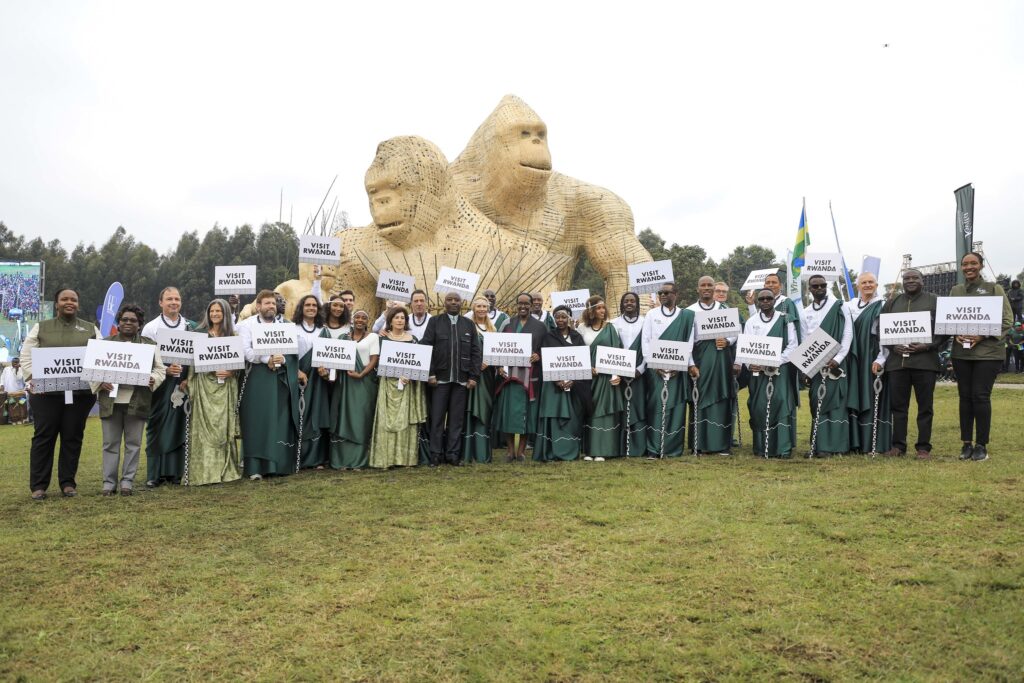
Kwita Izina is a Rwanda annual traditional festival where the newly born baby mountain gorillas in Volcanoes National Park are given names. During this event, thousands of local residents, dignitaries, conservationists, foreign residents and many other regional residents flock to experience this tremendous festival every year. If you have ever tracked gorillas, you realize that almost each mountain gorilla has a name. Have you ever asked yourself why they have names? For Rwanda, it is a culture and tradition that every year the newly born mountain gorillas are given names during Kwita Izina Mountain Gorilla Naming Ceremony. This year, Rwanda will be hosting its 13th annual naming ceremony on 1st September where 14 more baby gorillas will get given names. The major goal of this remarkable event is basically to help conservationists and researchers to monitor every mountain gorilla and their families in the wild. It was introduced as away of attracting local communities and foreign residents, conservation enthusiasts across the world to appreciate the value of conserving the mountain gorillas and their natural habitat both in Volcanoes National Park and the Virunga complex in the Northern Rwanda. Given the incredible efforts by the Rwanda government through the Rwanda Development Board together with other conservation partners and the local residents, to actively conserve the mountain gorillas and their natural habitat, the ancient century’s culture and tradition was shaped on these remarkable primates to offer them an identity.
Rwanda has several conservation programs but surprisingly most of them join the Kwita Izina mountain gorilla naming celebration. This event offers many visitors to have a close encounter to mountain gorilla groups, while the park officials name and mark the birthday of each newly born mountain gorilla in the Park. Kwita Izina event doesn’t come in only large population of visitors but also benefits the adjacent communities around the park in form of income. Residents from Kinigi village have time and again benefited from this event since it is the nearest area to Volcanoes National Park.
The names given to the young baby gorillas play an important role in the continued plan of monitoring every mountain gorilla in their gorilla groups and their natural environment. Just like humans, the name is one way of identifying the mountain gorillas while in their natural homes. The Kwita Izina, one of the rarest events of a kind was launched in 2005 mainly to create awareness on conservation efforts that have been put on to protect the critically endangered mountain gorillas in the wild.
For the last decades before the first Kwita Izina event, the naming of newly born mountain gorillas was conducted with less awareness amidst the public by the park rangers and researchers who closely monitor these remarkable primates daily in the wild. For the last years of gorilla naming in Rwanda, nearly 239 baby gorillas have so far been given names. This is a great success of conservation in the country. In the 20th century, it appeared like no country in East Africa would develop an effective mountain gorilla conservation plan. In 1902, when the European explorers caught a glimpse of these unique species in the jungles of Democratic Republic of Congo, Uganda and Rwanda, these primates’ natural habitat and numbers had reduced drastically. This was attributed to illegal hunting, poaching, political instabilities, degradation as well as mining, which forced gorillas from their natural habitat to live highlands of almost 175 square miles in Virunga complex and 125 square miles in Bwindi Impenetrable Forest in Uganda. No wonder, these have continued to threaten the mountain gorillas’ survival in the wild something that has also exposed them to human diseases. This explains why today, mountain gorillas have resorted to live in higher altitudes in search of safety. These threats have also caused the slow reproductive rate of these creatures given the fact that they keep migrating from one place to another. In 1981, mountain gorillas were estimated to be 254 in the Virunga complex and in the whole world, they were only 540. With all the surrounding pressures, these creatures are currently at the risk of extinction in the world. It was until; recently that mountain gorilla plight was realized at a time when Dian Fossey came to Rwanda for her research in the 80’s where she launched conservation measures with a view to save mountain gorillas in the wild.
Credit goes to conservation efforts that have been employed to save these species that today; there are nearly 900 in the world, making them the only Apes in the world whose population is a bit increasing. This is an incredible regional success so far in the world of conservation. But the most remarkable efforts have been experienced in Rwanda where a 2010 mountain gorilla census indicated the local yearly growth rate of 26.3%. Rwanda extraordinary conservation success comes from the general increased attention, funding and physical conservation.
However, the only challenge that Rwanda, Kwita Izina and the conservation program are facing is based on the fact that not all conservationists keep within the set goal of conservation program. The ancient conservationists believe that wild animals are better if they are left to live in their homes alone other than habituating them to human presence through veterinary interventions, tourists who track and providing them people’s names, just like it happened during Dian Fossey times. This comes with worries although many of us tend to look at a positive impact only and leave out the negative side of these actions on mountain gorilla conservation.
In conclusion, naming mountain gorillas is one way to help attract the attention of local residents and the world at large to appreciate the efforts of conservationists to protect these critically endangered species in the wild. It is through conservation that today these species have some how increased in number.
